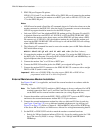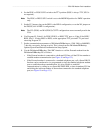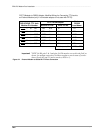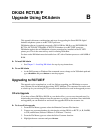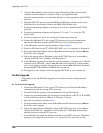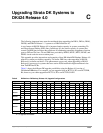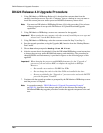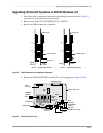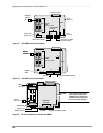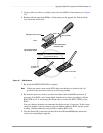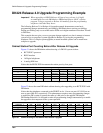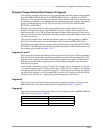
DK424 Release 4.0 Upgrade Procedure –––––––––––––––––––––––––––––––––––––––––––––––––––––––––––––
150
DKAdmin/DKBackup
DK424 Release 4.0 Upgrade Procedure
1. Using DKAdmin or DKBackup Release 4.0, download the customer data from the
currently installed processor. Save this “Customer” data as a backup in case you must re-
install the current processor and/or processor ROM/Flash memory release level.
Note You must use DKAdmin or DKBackup Release 4.0 for this procedure. Prior releases
of these programs do not provide DK Release 4.0 Upload/Download/Upgrade
capabilities.
2. Using DKAdmin or DKBackup, create a new customer for the upgrade.
Important! When creating the new customer, select the currently installed processor type and
release level—not the R4.0 Release level.
3. Using DKAdmin or DKBackup, select the customer created in Step 2 (not Step 1).
4. Start the upgrade procedure, using the Upgrade (
F5
) function from the “Backup/Restore
Data” menu.
5. Choose
Yes
when prompted to
Backup From DK First
.
6. After the current data is downloaded, follow the DKAdmin/DKBackup screen instructions
to change the processor and/or ROMs/flash memory and reinitialize. The procedure for
changing ROMs and flash memory is provided in figures on the following pages of this
appendix.
Important! When changing the processor and ROM/flash memory for the “Upgrade to”
processsor, you can add one RSIU to complete the upgrade at 9600 bps.
However:
● Do not add a new station or Tie/DID line PCBs.
● Do not change the order in which the PCBs are installed in the slots.
● Be sure to reinitialize the “Upgrade to” processor twice and set the DK TTY
port with Programs 76 and 03.
7. Continue with the upgrade procedure as prompted by the DKAdmin or DKBackup screens
until the process is complete.
Note An upgrade example,
“DK424 Release 4.0 Upgrade Programming Example”
on
Page 154
, describes what changes take place in the customer data during the
DKAdmin/DKBackup upgrade procedure to make the upgrade transparent to the end
user.



